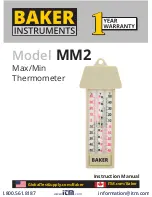
Each module recognizes and responds to a standard set of commands from the
base via the module bus. Standard commands are used for module and device
identification, status reporting, configuration, data input, and data output.
2.3
Data Processing
This section explains how measurement data is sampled, processed, and output
within the 1560
Black Stack
system. Data flow is diagramed in Figure 5 with
the details explained below.
2.3.1
Inputs
Measurement data originates with input devices such as the SPRT module.
Each input device provides one or more input channels. Each device is regis-
tered by the base controller on power up and the number of channels, measure-
ment type, and applicable temperature conversion types are recorded. Input
channels are assigned numbers in the order they are recognized (see Section
4.5.1). Data received from each input channel consists of a raw measurement
value (in ohms or volts) as well as a cold-junction compensation (CJC) temper-
ature for thermocouple inputs.
2.3.2
Sampling Control
The sampling control block determines which input channels are read and
when. The time is recorded with each measurement. The sampling interval
(measurement delay) between measurements is user-programmable (see Sec-
tion 5.1.1). As the sampling control block waits to receive data from an input
channel, it displays the measurement status and channel number of the pending
measurement on the status line of the display (see Section 2.2.1.1). After sam-
pling, each measurement is immediately passed to the input average block.
2.3.3
Input Average
The input average block calculates a moving average that includes the new
measurement and a number of past measurements. Each input channel is aver-
aged independently. The average count is user-programmable (see Section
5.1.5). After averaging, the measurement is immediately passed to the tempera-
ture conversion block. It is also stored internally (with the time stamp) for pos-
sible routing to display data fields or data output channels.
2.3.4
Temperature Conversion
The temperature conversion block calculates temperature or some other derived
quantity from the averaged measurement. The conversion may be performed
using any one of a number of algorithms as appropriate for the type of input.
These may include ITS-90, W(T
90
), IPTS-68, Callendar-Van Dusen, thermistor
[T(R) or R(T)], polynomial, and thermocouple conversion of any standard type
with internal or external cold-junction compensation. The conversion type and
any associated coefficients that constitute a probe characterization are inde-
1560 Thermometer Readout
User’s Guide
14
















































